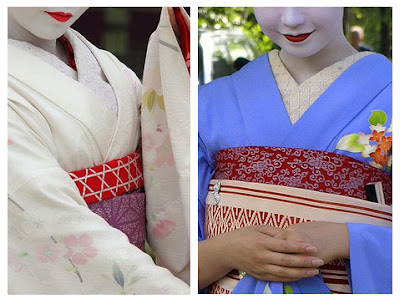I actually didn't know about this detail of tying the obi-age or not... So, after your mention, I've tried to make a quick research - didn't find anything, thou. So, I browsed trough my kimono pictures (specially from kimono rental stores, that deal with kitsuke worn in formal way) and tried to find a visible pattern for obi-age look.
Here's the result:
For irotomesode and houmongi (both formal, worn by married
and unmarried ladies), obi-age looks either clearly tied in
a visible knot (like in the pictures above)...
...or like we see here: with the middle of the sash "tucked in"
under the obi, so I find a bit difficult to be 100% sure if
it's a concealed knot or some kind of fold.
...Same case seen on kurotomesode (for married ladies only).
...Ambiguous look of the "tucked-in-the-middle" style. x_x
In the first picture, an iromuji (solid-color kimono for married and unmarried women, mostly worn in tea ceremonies) we can see what looks like a knot peeking from under the obi... But in the second picture, of a houmongi, it kind of looks more like a fold, doesn't it? Maybe it's two different ways of wearing the obi-age, with a knot or fold; or maybe it's two different knots, one that shows and other that doesn't... Anyway, I think it's safe to say that both looks fit a married woman's kimono. =)
...When it comes to furisode, it looks to me that anything goes! XD
I've spotted visible knots (just like the look for married women)...
...big fold in the middle (that looks like a bulkier version of the
misterious "tucked-in-the-middle" look - and makes it even more
ambiguous for me if that in the non-furisode examples is a knot or not...
...Plain non-tied wide sash...
...Bulky, slightly folded or "messy" wide sash...
...The furisode-exclusive tucked-into-the-eri look...
...Cool side knot...
...and even with a flower! X3
About geisha and maiko... I have less photos for comparation purposes, so I'll expeculate even more... But the information you found sounds correct to me. Maiko follow a "young" look, while geisha wear more mature kimono - this goes for sleeves (and musubi) lenght, amount of patterns and colors of the kimono, kanzashi... So, it seems logical that obi-age will follow the same idea.
A few details from geisha pictures in found...
there are knots in the obi-age - check! ;)
Here are maiko obi-age, clearly not tied, and with a stiff, neat
look (different from common furisode obi-age). Also, it shows
over the obi in much wider way than geisha obi-age...
...BUT, since kimono loves to make things complicated, here
are some tied, discrete maiko obi-age that follow a similar
look to geisha obi-age! I'm quite confused now! x_x
This may still be linked to the same logic that we see in non-furisode vs furisode obi-age for other women, thou... The non-tied, wide obi-age MAYBE are worn by low-rank (so, younger) maiko, while the tied, discrete ones MAYBE are worn by maiko when closer to become geisha, therefore, "more mature". This would confirm the info you found... But I don't know for sure. Geisha knowledge isn't my strong point... ^^;
Please, all readers, notice this
is all purely from my plain observation, with NO back research besides my small previous knowledge, and I may be TOTALLY wrong about obi-age, a subject I know almost nothing about! I just didn't have enought time to
make a real, deep research on the matter, sorry! Not even need to mention, the obi-age knots probably have proper names, I just don't know them. I'm such a noob when it comes to kimono accessories... -_-;
...Also, no photos here shown are mine! I found them in various sources I can't remember properly, and I only mean to use them for illustrative purposes. If you're the owner of these and whant them credited or removed, please, tell me and I'll do it right away.
Anyway, thanks to Witch-Boy for the question and info in obi-age tying! Very interesting! I never tought much about obi-age myself... Kimono surely has rules for all the little details! ^_^
...This was mostly just me rambling and coming up with hypothesis about stuff I don't really know, but I hope at least helps a bit in your further research or, at least, for drawing kimono. ^^;





























